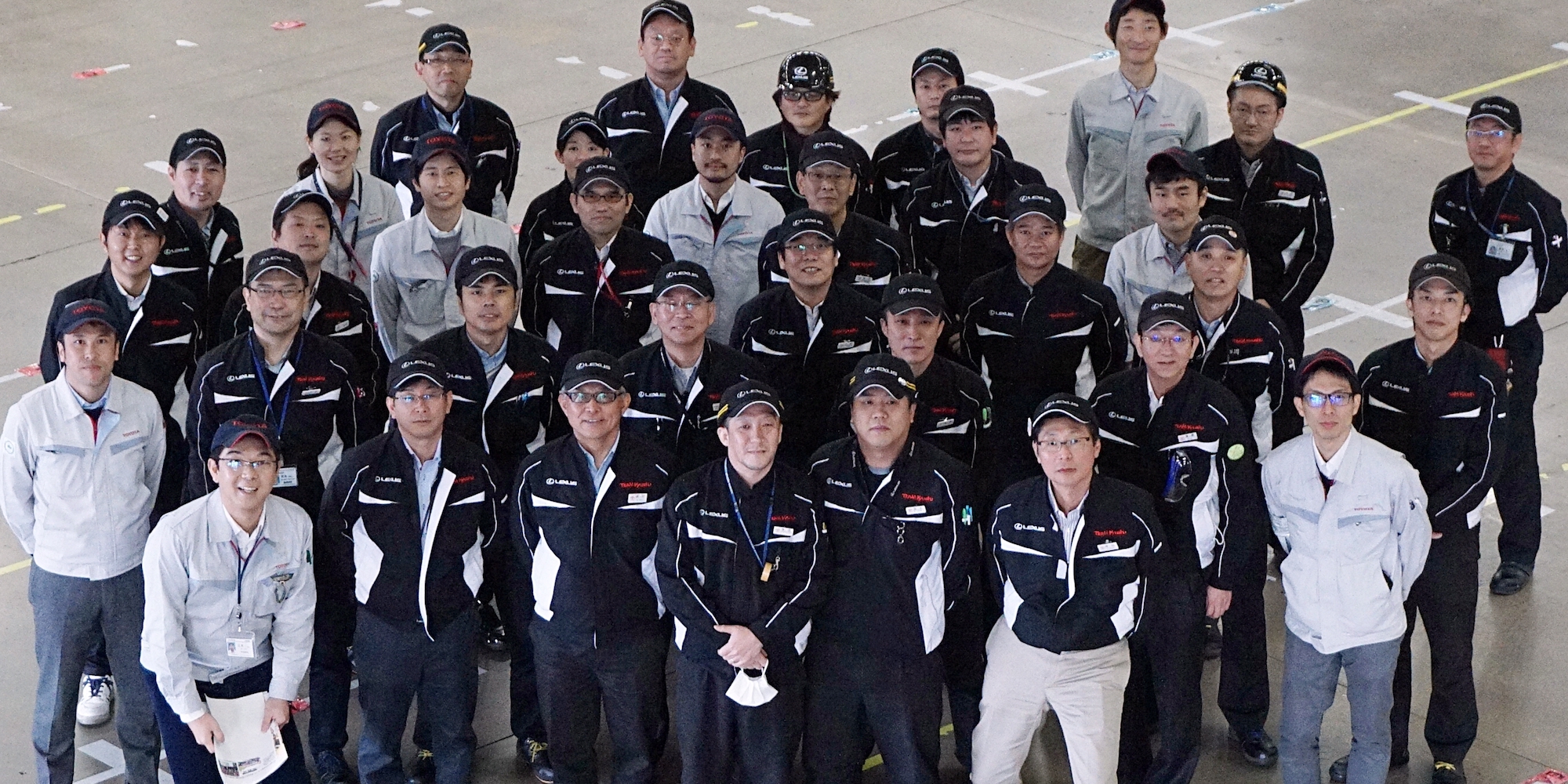
Jishuken at Toyota Motor Kyushu
INTERVIEW – A team from LGN just spent a week on the gemba with Toyota veteran Hideshi Yokoi for a jishuken exercise. We asked him to explain to us how he used this practice while at Toyota Motor Kyushu.
Interviewee: Hideshi Yokoi, former Senior Management Director for Safety & Healthcare/Quality at Toyota Motor Kyushu
Roberto Priolo: Mr Yokoi, thank you for your time. I would like to start by asking you what jishuken is and in what way this five-day activity differs from a traditional kaizen week.
Hideshi Yokoi: In Japanese, jishu-ken means “self-study”. It’s a tool used to develop people capabilities at the gemba. The differences between kaizen and jishuken might seem subtle at first, but they are substantial: to begin with, in kaizen the target is typically given by management, whereas in jishuken the team is asked to select it (and their managers to challenge them on it). Furthermore, the objective of kaizen is the achievement of the target, whereas the focus of jishuken is reflection and learning. Another difference is that jishuken is a continuous activity (teams are normally asked to come together more than once, to reflect on progress and continue the improvement), whereas kaizen is a one-time intervention (we often talk about kaizen event). Finally, we can say that the scope of jishuken is often bigger than that of kaizen: by engaging in it, we aim to make important and sustainable changes to the production system.
RP: How important is it to perform jishuken repeatedly?
HY: Extremely! At Toyota Motor Kyushu, I used to convene some of the teams doing jishuken three times a year. In part, this is a way to ensure the effective development of people: by returning to the same situation over and over again, we ensure team members continue to look for new and better ways of carrying out the work. To me, jishuken is real continuous improvement, in that it allows us to progress in our transformation by effecting gradual changes (in this sense, improvement becomes similar to climbing a mountain). Another reason why recurring jishuken sessions are important is sustainment: if we don’t come back to the activity, people will most likely go back to the old way of working.
RP: Speaking of Toyota Motor Kyushu, what led you to deploy jishuken there? As plant manager, what problem were you trying to solve?
HY: When I became manager of the Miyata Plant in 2013, my first impression was that the factory made high-quality cars and was full of hard-working and very polite people. However, I noticed that they were very busy trying to keep up with the production schedule (I even saw team members running across the shop floor). I also realized that managers were not familiar with kaizen tools – and couldn’t therefore teach them to team members. The kaizen culture at Miyata had gotten diluted, and I decided to use jishuken to revive it.
All departments had to participate in this activity, in which they were supported by the TPS division. At the beginning, the team wasn’t convinced (“It will be more work for us,” they told me), but when I explained that I wanted them to use it for whatever they deemed important, they started to buy into it. My message to the team members was that I wasn’t worried about productivity and production numbers and that our priority was to pursue safety (keeping my people safe was my responsibility as manager) and quality. I knew that financial results would be natural consequences of working in a safe environment and building high-quality cars. So, I encouraged the team members to leverage jishuken to make their work easier, not to improve efficiency.
RP: From a results point of view, what happened in the Miyata Plant after jishuken became part of the way of working?
HY: We saw improvements in quality, profitability and efficiency. We were proud to achieve the highest levels of productivity and the highest quality numbers in the history of Toyota Motor Kyushu. We are not fully satisfied with our safety performance, even though the number of injuries is on a downward trend.
RP: A big part of your career has focused on helping others internalize TPS principles and practices, whether within Toyota through the TPS division or in American companies through TSSC (where you even served as President). In your experience, what is the biggest hindrance to a successful business transformation?
HY: Management behavior, without a doubt. And this is as true in the West as it is in Japan. We can change the shop floor all we want, but if management doesn’t understand and support our improvement efforts, change won’t stick. When I arrived at Miyata, managers weren’t spending enough time at the gemba. I, for one, went to the shop floor every day – often for two to three hours – and before too long, I saw that the managers started to follow my lead. Ultimately, this is what speeded up the pace of change in the plant: going to see problems first hand allowed the team to come up with countermeasures more quickly, which greatly contributed to their development.
As manager, my job was to eliminate the need for my help. To achieve that, I gave people the authority to make changes and offered them guidance whenever they needed it – but always without providing solutions. In the process, they got more and more engaged and grew a lot. Don’t forget that making things really means to make people – monozukuri through hitozukuri.
THE INTERVIEWEE

Read more


FEATURE – A lean retail experiment: Carrefour Group in Brazil has started a lean journey to rapidly adapt to market changes and reach excellence in the delivery of value to customers.


FEATURE – The theory of hoshin kanri is clear, but how can you adapt it to a government organization structured in departments where making A3s is not a daily practice? A Dutch ministry shares its experience.



WOMACK'S YOKOTEN – In our lean journeys we spend so much time on improvement (kaizen) and innovation (kaikaku) that we often forget to address the issue of how to maintain our gains. Do you know iji? Perhaps you should.


RESEARCH – A recent report by the National Audit Office looks at what works and what doesn’t when lean management is applied in UK government organizations.

